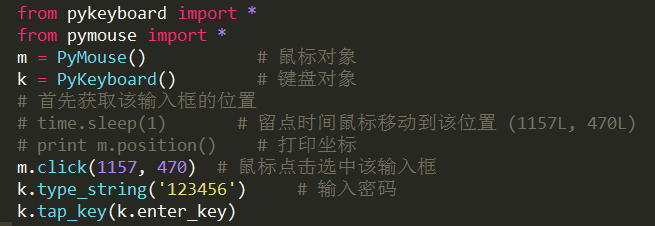Django接收自定义http header过程详解
add by zhj: Django将所有http header(包括你自定义的http header)都放在了HttpRequest.META这个Python标准字典中,当然HttpRequest.META
中还包含其它一些键值对,这些键值对是Django加进去的,如SERVER_PORT等。对于http header,Django进行了重命名,规则如下
(1) 所有header名大写,将连接符“-”改为下划线“_”
(2) 除CONTENT_TYPE和CONTENT_LENGTH,其它的header名称前加“HTTP_”前缀
参见 https://docs.djangoproject.com/en/1.6/ref/request-response/
我个人比较喜欢跟踪源代码来查看,源代码如下,
class WSGIRequestHandler(BaseHTTPRequestHandler):
server_version = "WSGIServer/" + __version__
def get_environ(self):
env = self.server.base_environ.copy()
env['SERVER_PROTOCOL'] = self.request_version
env['REQUEST_METHOD'] = self.command
if '?' in self.path:
path,query = self.path.split('?',1)
else:
path,query = self.path,''
env['PATH_INFO'] = urllib.unquote(path)
env['QUERY_STRING'] = query
host = self.address_string()
if host != self.client_address[0]:
env['REMOTE_HOST'] = host
env['REMOTE_ADDR'] = self.client_address[0]
if self.headers.typeheader is None:
env['CONTENT_TYPE'] = self.headers.type
else:
env['CONTENT_TYPE'] = self.headers.typeheader
length = self.headers.getheader('content-length')
if length:
env['CONTENT_LENGTH'] = length
for h in self.headers.headers:
k,v = h.split(':',1)
k=k.replace('-','_').upper(); v=v.strip()
if k in env:
continue # skip content length, type,etc.
if 'HTTP_'+k in env:
env['HTTP_'+k] += ','+v # comma-separate multiple headers
else:
env['HTTP_'+k] = v
return env
def get_stderr(self):
return sys.stderr
def handle(self):
"""Handle a single HTTP request"""
self.raw_requestline = self.rfile.readline()
if not self.parse_request(): # An error code has been sent, just exit
return
handler = ServerHandler(
self.rfile, self.wfile, self.get_stderr(), self.get_environ()
)
handler.request_handler = self # backpointer for logging
handler.run(self.server.get_app())
class WSGIRequest(http.HttpRequest):
def __init__(self, environ):
script_name = base.get_script_name(environ)
path_info = base.get_path_info(environ)
if not path_info:
# Sometimes PATH_INFO exists, but is empty (e.g. accessing
# the SCRIPT_NAME URL without a trailing slash). We really need to
# operate as if they'd requested '/'. Not amazingly nice to force
# the path like this, but should be harmless.
path_info = '/'
self.environ = environ
self.path_info = path_info
self.path = '%s/%s' % (script_name.rstrip('/'), path_info.lstrip('/'))
self.META = environ
self.META['PATH_INFO'] = path_info
self.META['SCRIPT_NAME'] = script_name
self.method = environ['REQUEST_METHOD'].upper()
_, content_params = self._parse_content_type(self.META.get('CONTENT_TYPE', ''))
if 'charset' in content_params:
try:
codecs.lookup(content_params['charset'])
except LookupError:
pass
else:
self.encoding = content_params['charset']
self._post_parse_error = False
try:
content_length = int(self.environ.get('CONTENT_LENGTH'))
except (ValueError, TypeError):
content_length = 0
self._stream = LimitedStream(self.environ['wsgi.input'], content_length)
self._read_started = False
self.resolver_match = None
WSGIRequest类实例化方法__init__(self,environ)中第二个参数就是WSGIRequestHandler.get_environ()方法返回的数据
WSGIRequest.META在environ的基础上加了一些键值对
用Django做后台,客户端向Django请求数据,为了区分不同的请求,想把每个请求类别加在HTTP头部(headers)里面。
先做实验,就用Python的httplib库来做模拟客户端,参考网上写出模拟代码如下:
#coding=utf8
import httplib
httpClient = None
try:
myheaders = { "category": "Books",
"id": "21",
'My-Agent': "Super brower"
}
httpClient = httplib.HTTPConnection('10.14.1XX.XXX',8086,timeout=30)
httpClient.request('GET','/headinfo/',headers=myheaders)
response = httpClient.getresponse()
print response.status
print response.reason
print response.read()
except Exception, e:
print e
finally:
if httpClient:
httpClient.close()
其中'/headinfo/'为服务器的响应目录。
然后是服务端的响应代码,《The Django Book》第七章有个获取META的例子:
# GOOD (VERSION 2)
def ua_display_good2(request):
ua = request.META.get('HTTP_USER_AGENT', 'unknown')
return HttpResponse("Your browser is %s" % ua)
正好看过这个例子,就模拟上面的这个写了一个能够返回客户端自定义头部的模块:
from django.http import HttpResponse
def headinfo(request):
category = request.META.get('CATEGORY', 'unkown')
id = request.META.get('ID','unkown')
agent = request.META.get('MY-AGENT','unkown')
html = "<html><body>Category is %s, id is %s, agent is %s</body></html>" % (category, id, agent)
return HttpResponse(html)
运行结果如下:
$python get.py #输出: #200 #OK #<html><body>Category is unkown, id is unkown, agent is unkown</body></html>
可以看到服务器成功响应了,但是却没有返回自定义的内容。
我以为是客户端模拟headers出问题了,查找和试验了许多次都没有返回正确的结果。后来去查Django的文档,发现了相关的描述:
HttpRequest.META
A standard Python dictionary containing all available HTTP headers. Available headers depend on the client and server, but here are some examples:
- CONTENT_LENGTH – the length of the request body (as a string).
- CONTENT_TYPE – the MIME type of the request body.
- HTTP_ACCEPT_ENCODING – Acceptable encodings for the response.
- HTTP_ACCEPT_LANGUAGE – Acceptable languages for the response.
- HTTP_HOST – The HTTP Host header sent by the client.
- HTTP_REFERER – The referring page, if any.
- HTTP_USER_AGENT – The client's user-agent string.
- QUERY_STRING – The query string, as a single (unparsed) string.
- REMOTE_ADDR – The IP address of the client.
- REMOTE_HOST – The hostname of the client.
- REMOTE_USER – The user authenticated by the Web server, if any.
- REQUEST_METHOD – A string such as "GET" or "POST".
- SERVER_NAME – The hostname of the server.
- SERVER_PORT – The port of the server (as a string).
With the exception of CONTENT_LENGTH and CONTENT_TYPE, as given above, any HTTP headers in the request are converted toMETA keys by converting all characters to uppercase, replacing any hyphens with underscores and adding an HTTP_ prefix to the name. So, for example, a header called X-Bender would be mapped to the META key HTTP_X_BENDER.
其中红色的部分说明是说除了两个特例之外,其他的头部在META字典中的key值都会被加上“HTTP_”的前缀,终于找到问题所在了,赶紧修改服务端代码:
category = request.META.get('HTTP_CATEGORY', 'unkown')
id = request.META.get('HTTP_ID','unkown')
果然,执行后返回了想要的结果:
$python get.py #正确的输出: #200 #OK #<html><body>Category is Books, id is 21, agent is Super brower</body></html>
得到的经验就是遇到问题要多查文档,搜索引擎并不一定比文档更高效。
以上就是本文的全部内容,希望对大家的学习有所帮助,也希望大家多多支持【听图阁-专注于Python设计】。


